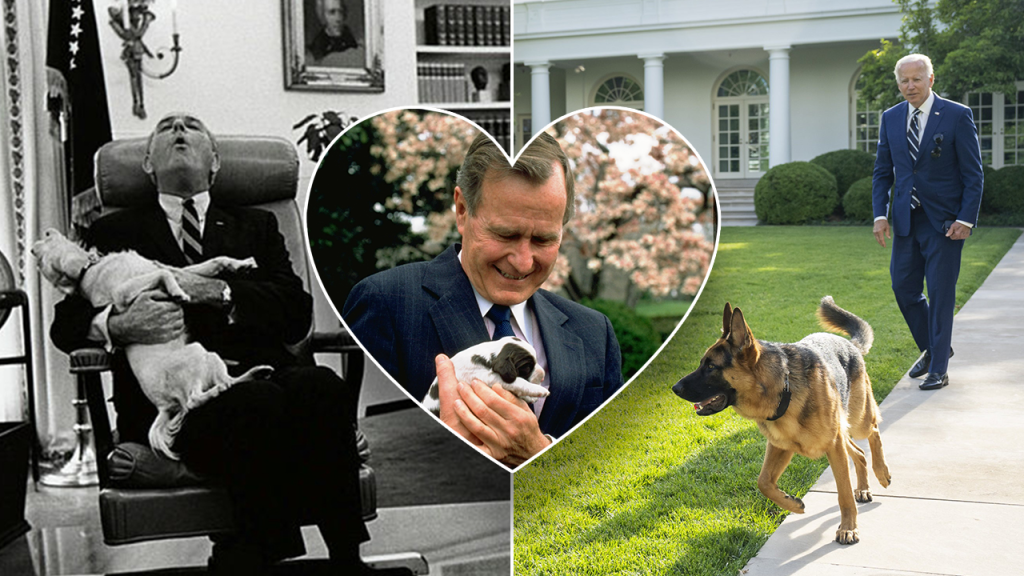Presidential pets have been a long-standing tradition in Washington, D.C., with President Biden’s German shepherds, Commander and Major, recently residing in the White House despite reports of poor behavior. While the 2024 presidential candidates, former President Trump and Vice President Kamala Harris, are unlikely to have a canine companion, Republican vice presidential candidate Sen. JD Vance of Ohio may continue the trend. Vance and his wife recently brought their 9-month-old German shepherd named Atlas on the campaign trail in Milwaukee, showcasing the breed’s loyalty and athleticism. German shepherds, known for being a top choice for police K9s, require proper training and routine to mitigate unwanted behaviors.
Reports showed that Commander, one of Biden’s German shepherds, bit and attacked numerous members of the U.S. Secret Service in multiple incidents, leading to his removal from the White House. It is important for German shepherds, like Atlas potentially coming to D.C. with Vance depending on election results, to have outlets for activity, proper training, and exposure. Celebrity dog trainer Chrissy Joy emphasized the importance of routine, training, and socialization for German shepherds, especially in a busy environment like the White House. She advised seeking professional help for dogs showing signs of fear or aggression to ensure positive behavior.
Presidential pets have a long history, starting with President Theodore Roosevelt who popularized the tradition with various animals, including his terrier named Skip. Many presidents have owned loyal companions, such as Harding’s Airedale terrier Laddie Boy, Coolidge’s collie Rob Roy, and Hoover’s Belgian Malinois King Tut. FDR’s black Scottie named Fala, accompanied him to meetings and conferences. Some presidential dogs even had their own puppies, like Jacqueline Kennedy’s Pushinka. The trend continued with other presidents like Lyndon B. Johnson, Ronald Reagan, and Barack Obama, each having their beloved pets during their time in office.
While the trend of presidential pets is cherished, it is essential to consider the well-being of the dog when bringing them into the White House, according to expert Chrissy Joy. She emphasized the importance of maintaining a consistent routine for the dog, even in a changing environment like the White House. Dogs require stability and proper training to thrive and develop confidence. Families considering bringing a dog into their home, especially in a high-profile environment like the White House, should evaluate whether the dog’s activity requirements, temperament, and breed traits are a good fit for the situation. It is crucial to ensure that the dog receives proper care and attention to prevent potential behavioral issues.
Presidents throughout history have formed close bonds with their furry companions, from Roosevelt’s variety of pets to the Kennedy family’s Welsh terrier, Charlie, who fathered puppies with Pushinka. Millie, the English springer spaniel owned by Barbara Bush, appeared on the cover of Life magazine after giving birth to puppies. President Gerald Ford’s golden retriever Liberty also had puppies, while President Lyndon B. Johnson welcomed beagles and a stray dog named Yuki into the White House. Additionally, the Nixon family had Irish setters and poodles, the Clintons had a chocolate lab named Buddy, and the Bush family had Scottish terriers named Barney and Miss Beazley. The Obamas introduced Portuguese water dogs named Bo and Sunny, generating interest in the breed nationwide.
In conclusion, the tradition of presidential pets in Washington, D.C., is a beloved part of the country’s history. While some presidents have faced challenges with their canine companions, proper training and routine can help prevent unwanted behaviors. As Senator JD Vance potentially continues this tradition with his German shepherd Atlas, it is crucial to consider the dog’s well-being and ensure they receive the care and attention they need. Presidential pets have brought joy and companionship to the White House over the years, forming close bonds with their owners and becoming beloved figures in American history.













